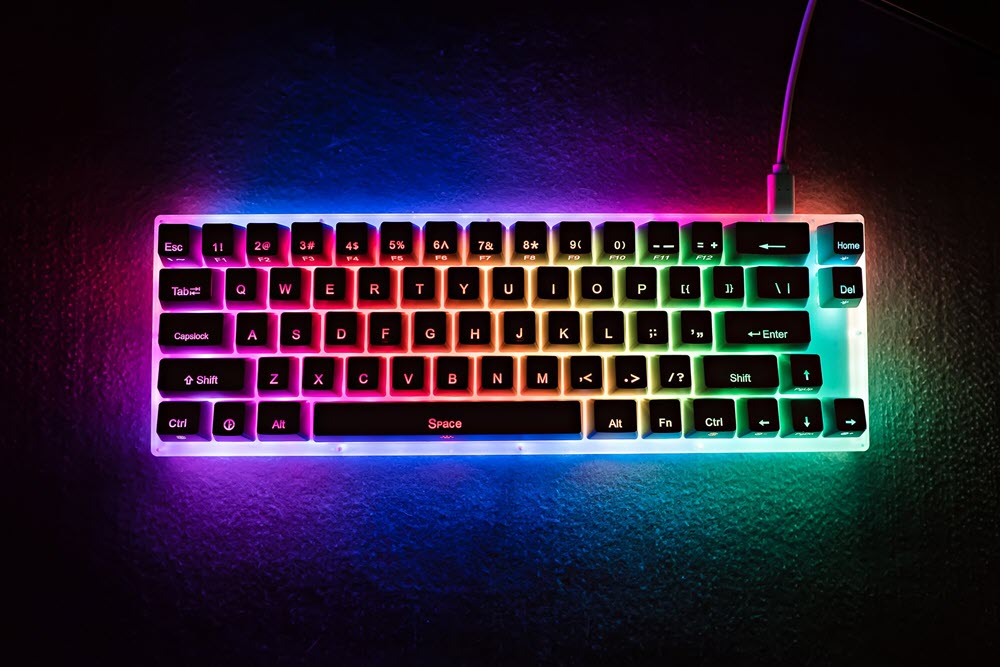Technology
Wireless Keyboards and Mice: The Future of Productivity and Comfort
Wireless Keyboards and Mice: The Future of Productivity and Comfort
In today’s fast-paced digital world, the way we interact with our devices plays a crucial role in shaping our productivity and overall experience. Among the essential tools that enhance this interaction are wireless keyboards and mice. These peripherals have seen a significant rise in popularity due to their convenience, flexibility, and ergonomic designs. Whether you are working from home, gaming, or simply browsing the web, wireless keyboards and mice offer a seamless and clutter-free experience.
In this article, we will explore the benefits of wireless keyboards and mice, the various types available in the market, key features to consider, and how these devices can improve both productivity and comfort in your daily tasks.
1. The Benefits of Wireless Keyboards and Mice
Wireless keyboards and mice are rapidly becoming the go-to choice for individuals who prioritize convenience and a clean workspace. Unlike their wired counterparts, these peripherals eliminate the hassle of tangled cables, offering a cleaner and more organized desk. But the benefits go far beyond just aesthetics:
Portability and Flexibility
One of the standout advantages of wireless keyboards and mice is their portability. Without the need for cables, you can easily move them around your workspace or even use them from a distance. This is particularly useful for those who connect their laptops or desktops to external monitors or televisions and prefer to work or browse from a comfortable spot across the room.
Clutter-Free Workspace
A cluttered workspace can often lead to distractions and reduced productivity. Wireless devices eliminate the need for long cables running across your desk, creating a minimalist and organized environment. This not only improves the visual appeal of your workspace but also allows for more room to comfortably move your hands and equipment.
Improved Mobility and Ergonomics
Wireless peripherals give users more freedom of movement, which can lead to better ergonomic practices. You can place your keyboard and mouse at a position that suits your natural posture, reducing strain on your wrists, shoulders, and neck. This is particularly important for those who spend long hours working or gaming at a desk.
Universal Compatibility
Most wireless keyboards and mice are designed to work with a wide range of devices, including laptops, desktops, tablets, and even smartphones. This universal compatibility makes them ideal for people who switch between different devices throughout the day.
2. Types of Wireless Keyboards and Mice
There is a wide variety of wireless keyboards and mice available in the market, each designed to cater to different needs. Choosing the right type depends on how you plan to use them, whether for work, gaming, or general purposes.
Wireless Keyboards
- Standard Wireless Keyboards: These are designed for everyday use and are ideal for general typing tasks. They usually come with all the essential keys and often include multimedia shortcuts to enhance functionality.
- Mechanical Wireless Keyboards: Mechanical keyboards are known for their tactile feedback and durability. They are especially popular among gamers and professionals who prefer a more responsive typing experience.
- Compact and Portable Wireless Keyboards: If portability is a priority, compact wireless keyboards are a great option. They are lightweight, often feature fewer keys, and are easy to carry around.
- Ergonomic Wireless Keyboards: These keyboards are designed to promote a natural typing posture, reducing the risk of repetitive strain injuries. Ergonomic keyboards often feature split designs, curved layouts, and adjustable heights.
Wireless Mice
- Standard Wireless Mice: These mice are designed for general use and are suitable for most tasks, from web browsing to document editing. They offer basic functionality without any frills.
- Gaming Wireless Mice: For gamers, wireless gaming mice offer high-precision tracking, customizable buttons, and adjustable DPI settings to enhance gameplay. They are often designed with ergonomics in mind to ensure comfort during long gaming sessions.
- Ergonomic Wireless Mice: Ergonomic mice are designed to reduce strain on the wrist and arm. These mice often have a vertical design, which encourages a more natural hand position.
- Portable Wireless Mice: Compact and portable mice are great for on-the-go users. These mice are small, lightweight, and often feature a retractable or foldable design, making them easy to pack in a bag or case.
3. Key Features to Consider When Choosing Wireless Keyboards and Mice
When choosing a wireless keyboard and mouse, it’s important to consider specific features that align with your personal or professional needs. Below are some key aspects to keep in mind:
Battery Life
Battery life is one of the most important factors to consider when choosing wireless peripherals. Most wireless keyboards and mice run on either rechargeable batteries or standard AA/AAA batteries. Some models can last for several months on a single charge, while others may need more frequent recharging.
- Rechargeable Batteries: Devices with built-in rechargeable batteries are more eco-friendly and cost-effective in the long run. However, you’ll need to recharge them periodically.
- Removable Batteries: Keyboards and mice with removable batteries offer the convenience of simply replacing the batteries when they run out, though this may lead to higher ongoing costs.
Connectivity Options
Most wireless keyboards and mice connect to devices via two primary methods: Bluetooth and USB receivers.
- Bluetooth Connectivity: Bluetooth devices don’t require a USB dongle, making them ideal for laptops and tablets with limited ports. They also offer a stable and reliable connection over a reasonable range.
- USB Receivers: Devices that use USB receivers often provide better response times and reduced latency, which is essential for gaming or tasks that require precise control. However, they do occupy a USB port, which can be an issue for devices with limited ports.
Ergonomics
Ergonomic design is crucial for individuals who spend long hours at their desks. Look for keyboards with a curved layout or split design that promote a natural typing posture. Similarly, ergonomic mice with vertical designs can help reduce the risk of carpal tunnel syndrome and other repetitive strain injuries.
Customizable Features
For advanced users, particularly gamers and professionals, having customizable buttons and programmable keys can significantly enhance productivity and convenience. Many wireless gaming mice come with customizable side buttons, and some wireless keyboards offer macro keys that can be programmed for specific commands or shortcuts.
Response Time and DPI
For gamers or users who require precision, the response time and DPI (dots per inch) sensitivity of a mouse are critical factors. A higher DPI setting allows for more precise movements, which is ideal for fast-paced gaming or graphic design tasks. Gaming mice typically allow users to adjust DPI on the fly, making them versatile for different types of activities.
4. How Wireless Keyboards and Mice Improve Productivity
The switch to wireless keyboards and mice can significantly improve your productivity by offering a more flexible and comfortable working environment. Here’s how:
Increased Comfort and Ergonomics
As mentioned earlier, wireless keyboards and mice allow users to create a more ergonomic setup, reducing the risk of fatigue and strain during long hours of use. This improved comfort translates into better focus and sustained productivity over extended periods.
Enhanced Mobility
Wireless devices give users the freedom to move around without being tethered to their desks. This flexibility is especially beneficial in collaborative workspaces or during presentations, where you may need to control your device from a distance.
Quick and Easy Setup
Wireless keyboards and mice are incredibly easy to set up and use. Once paired with your device, they connect automatically, allowing you to switch between tasks without any delays or interruptions. This streamlined experience makes them ideal for multitasking professionals.
Customizable Shortcuts
For professionals working with complex software or gamers seeking a competitive edge, the ability to customize keys and buttons on wireless peripherals can save time and boost efficiency. Programmable shortcuts enable quick access to frequently used commands, reducing the need to navigate through menus.
Conclusion
Wireless keyboards and mice have become essential tools for modern workspaces, offering unparalleled convenience, mobility, and comfort. Whether you’re a gamer looking for precision and performance, or a professional seeking to improve productivity, there’s a wide range of wireless peripherals to suit your needs. With key features such as ergonomic designs, long battery life, and customizable options, these devices are transforming the way we interact with technology.
As you explore different models, be sure to consider your personal requirements, whether it’s for portability, comfort, or performance. By choosing the right wireless keyboard and mouse, you can create a more efficient, organized, and enjoyable workspace, free from the limitations of cables and clutter.


